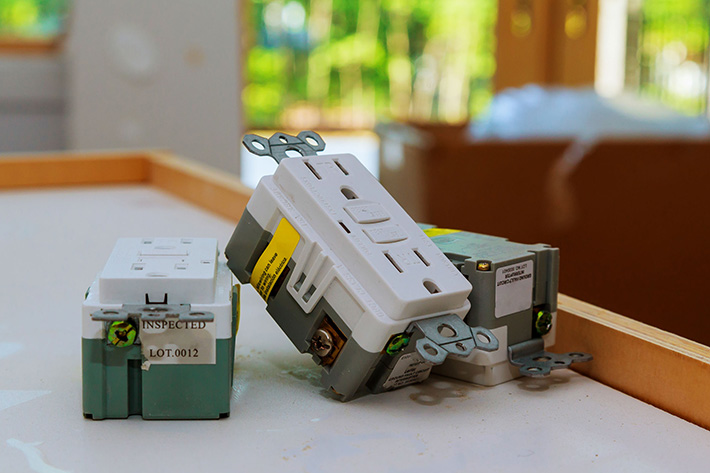You likely don’t think a lot about the outlets in your home and how they’re placed. All you know is you need electricity and there always seems to be one nearby, or perhaps you find the most convenient option is hardly convenient at all. Figuring out how to place them in a home is exactly very scientific and more regulated than you might think.
You want the placement of your electrical outlets to be convenient, but it also needs to be safe.
Depending on the rooms you’re working in, you’re going to have different needs and hit different parts of the home. Bedrooms, kitchens, living rooms, and bathrooms all have different outlet needs and requirements for use and safety that you need to consider as you go about placing outlets in the new home. If you’re incredibly new to choosing where outlets can go, we can offer some help and guidance there.
Below are some notes and tips on choosing outlet placements in a new home and some things you should consider.
Bedrooms
The thing to note for bedrooms is the lighting options. If you don’t have an overhead light in a bedroom, you want outlets placed spaciously enough that you can get lighting across the room. Also consider your typical habits within the bedroom like where you like to read, where you use your electronics, and place accordingly. Having at least one outlet available near the bed is crucial with at least two others throughout the room.
Communal Spaces
Communal spaces like living and dining rooms require more outlets than bedrooms. These rooms are used by large groups of people at any given time and need to be able to provide enough power and convenience for all of them. On top of that, you want to make sure you have lighting in ample enough space. Another note to consider is how you intend to decorate seasonally in the living room depending on what you celebrate and what decorations need to be placed. It’s not critical, but it can save you headaches.
Kitchens and Bathrooms
Kitchens are straight forward but safety is important. Outlets go where you anticipate using your appliances. But you need to make use of specialized outlets like GFCI outlets that prevent surges from appliances using large amounts of electricity. You’ll need similar outlets in the bathroom where hair dryers and straighteners are often used and other electric appliances. You also want to be weary of proximity to water in both these rooms and plan accordingly.
Related Questions
How many outlets should a typical room have?
Generally speaking, a room should have one outlet for each of the 12 feet of wall space and one outlet on each wall. This is the typical spacing in any given modern room.
What code is involved in placing outlets?
Generally, outlets should not be placed along the floor line and be installed in a wall with at least 2 feet of width. If you have a commercial building, you also need to keep in mind ADA requirements.
Talk to your electrician about how to best place outlets in your new home!
Bratcher Electric can help with all electrical upgrades and services needed in your home. We are a full service electrical contracting firm that has been working with businesses and residents throughout Michigan for over 50 years.
Our electrical services include new home wiring, generator service and installation, electrical code and service upgrades, surge protection and much more! Contact us today for a Free Consultation!

